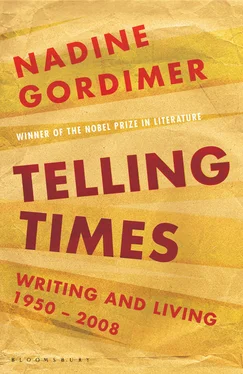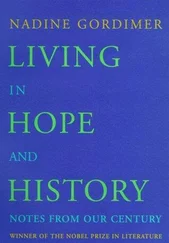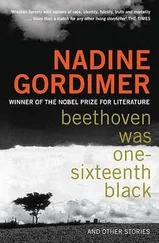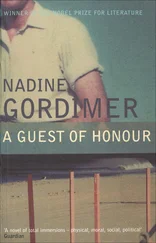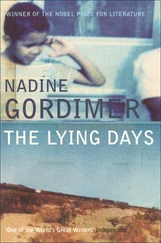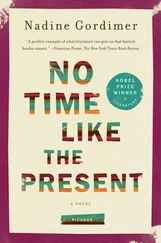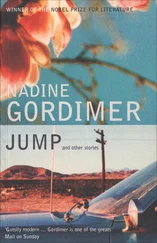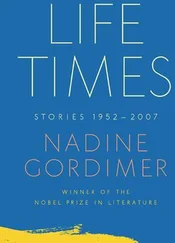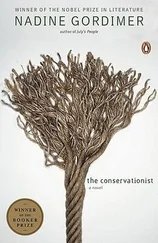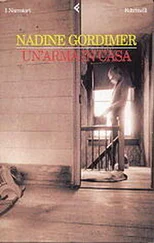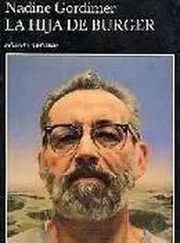Desmond Tutu’s supreme achievement so far has been the Truth and Reconciliation Commission. That scarcely requires stating. I recall what I wrote near the beginning of the chance to pay tribute: ‘His boldness was never punitive; the power he has always had is to make it impossible for any persons not to recognise their responsibility for what they do to demean and brutalise others.’ Was this not the principle of the Commission? Its faith? It did not offer dispensation for confession but reconciliation with the victim by total public admittance of responsibility for terrible acts committed. A much more difficult attempt at resolution of crimes against humanity than a Nuremberg. The truth is harsh, shocking, terribly wonderful: Desmond has never accepted the evasion that truth is relative, for himself. At the Commission I understood that he extended that ultimate condition to our people and our country as the vital necessity for living together in survival of the past. The acceptance of that, he has taught, has to come from within.
When placing the TRC as his greatest achievement I added the proviso ‘so far’. Desmond Tutu continues to be a bold and zestful force in our society, our country, completely unfazed if the convictions his human conscience and care demand, mean that his interventions may be unwelcome to the government. He gives his full support in the many initiatives it takes to create fulfilment of the needs of a free people still feeling the wounds of the past. But the other honest test of loyalty to a regime surely is to have the guts (Desmond often favours colloquial language!) to speak out when its actions are deficient. A vital example is his outspokenness on the devastation of HIV/Aids among our people and its consequences for the country’s development. He has not been afraid to come forth and say that the level of official response, turning away from leadership of the tremendous effort needed to combat the threat, is low and seems deliberately blinkered. Whatever else happens in our country that may require to be faced by us without compromising the truth, Desmond Tutu certainly will be there to turn us towards problems we have to solve if we care for one another and our country. I know it’s been a blessing for me — from whatever chance or good source that directs human destinies — to have lived along his seventy-five years in the same time and the same country as this splendid life-enhancing personality.
Tutu.
2006
Lust and Death: Philip Roth’s Everyman
Nor dread nor hope attend/A dying animal …/Man has created death.
Philip Roth quotes not these lines from Yeats but those of Keats as epigraph to his latest novel: ‘Here where men sit and hear each other groan;/Where palsy shakes a few, sad, last grey hairs, / Where youth grows pale, and spectre-thin, and dies;/Where but to think is to be full of sorrow.’
For three of the world’s best novelists, Fuentes, García Márquez and Roth, the violent upsurge of sexual desire in the face of old age is the opposition of man to his own creation, death.
The final kick of the prostate, my old physician friend called it. But it cannot be summed up, so wryly and glibly, when it is the theme of contemporary fiction by these writers from the two Americas. García Márquez’s Memories of My Melancholy Whores , Fuentes’s Inez , Roth’s Human Stain and The Dying Animal and now Everyman have in common in their wonderful transformations the phenomenon — presented as similar to that of adolescence — of late sexual desire. The last demanding exuberance in the slowly denuded body, when ‘to think is to be full of sorrow’: the doubt that comes about the unquestioned superiority of the rewards of the intellect. David Kepesh in The Dying Animal claims the phenomenon as the undeniable assertion of ‘erotic birthright’, and this holds good for Philip Roth’s unnamed — perhaps because he is, Roth forces us to admit — Everyman.
His story begins when he is dead. But we recognise him immediately: he’s in a cultural profession (if a doubtful one), advertising, with an avocation as an amateur painter; he’s been married several times; he has adult progeny with whom he is in various states of lack of relationship. He’s the man Roth has long chosen to take on our human burdens, as a writer has always to select particular beings from among us for attention. The Cultural Journalist in the grave has been a resident in a retirement village for several years before his death. The relatives, an ex-wife, etc., are at the graveside. It has been the decision of his most-loved child, Nancy, to bury him in a half-abandoned Jewish cemetery although she knows he was an atheist: he loved his parents and he will be close to them in their graves.
Roth takes the writer’s free acknowledgement of many literary modes while unceasingly experimenting with his own. From the graveside nod to Dickens, the man unseen there is tracked back to life and even before his individual conception. Here, the chronology of living isn’t that of a calendar but of cross-references; soon we’re at an earlier graveside. After a re-creation of the Cultural Journalist’s childhood as he waits for one of the medical ‘interventions’ that maintain his geriatric body, he turns back the pages of self to the day of his father’s funeral. It is in the same cemetery, the old Jewish one founded by immigrants. That day, as he watches, his father’s jewellery store is vividly present. It opened in 1933 with an immigrant’s audacity as the only capital: ‘Diamonds — Jewelry — Watches’. In order to ‘avoid alienating or frightening away the port city’s tens of thousands of churchgoing Christians with his Jewish name, he extended credit freely … he never went broke with credit, and the goodwill generated by his flexibility was more than worth it’. A good man, as his son recognises.
Perhaps it’s possible to be good only in a life with a number of limitations? So much is intriguing, left for the reader to ask himself or herself in Roth’s writings. The reason to risk opening a store in the bad times of the Depression ‘was simple’: he ‘had to have something to leave my two boys’. This, in Roth’s context, is not sentimental; it’s an unstated principle of survival with connotations waking the reader to the unending presence of the immigrant, generation after generation, country to country, Jew, Irishman, Muslim, no roots but shallow ones scratched into someone else’s natal soil.
If descriptive amplitude went out with the nineteenth century, Philip Roth, who strides the whole time and territory of the word, has resuscitated it — in description revved with the power of narrative itself. This father’s graveside is — for the canny reader, not the son — a post-premonitory experience, intended to lead back to the graveside at which Roth chose to begin the son’s life, a tug at the lien between the son and his antecedents ignored by him. He has never before witnessed the Jewish Orthodox ritual whereby the mourners and not the cemetery professionals literally bury the coffin. What he sees is not a symbolic sprinkling of a handful of dust, but the relatives and friends heaving shovels of earth to thud on the coffin, filling the hole to obliteration. As he becomes ‘immersed in the burial’s brutal directness’ what comes to him is not reverence but horror. ‘All at once he saw his father’s mouth as if there were no coffin, as if the dirt they were throwing into the grave was being deposited straight down on him, filling up his mouth, blinding his eyes, clogging his nostrils and closing off his ears … He could taste the dirt coating the inside of his mouth well after they had left the cemetery and returned to New York.’ The taste of death.
Читать дальше
